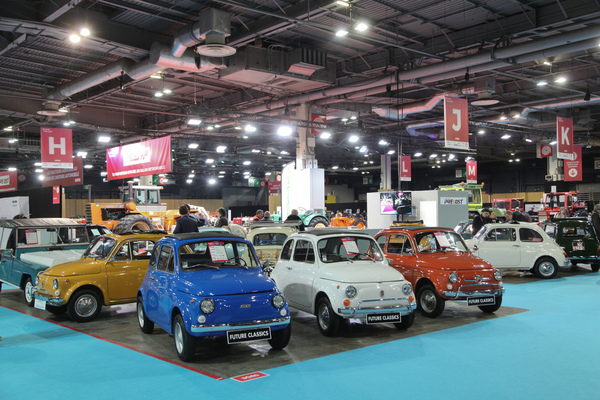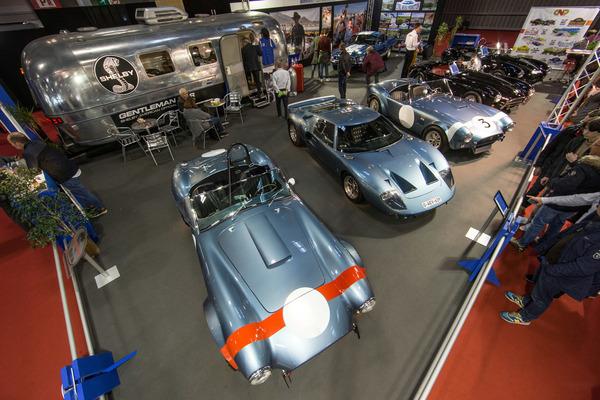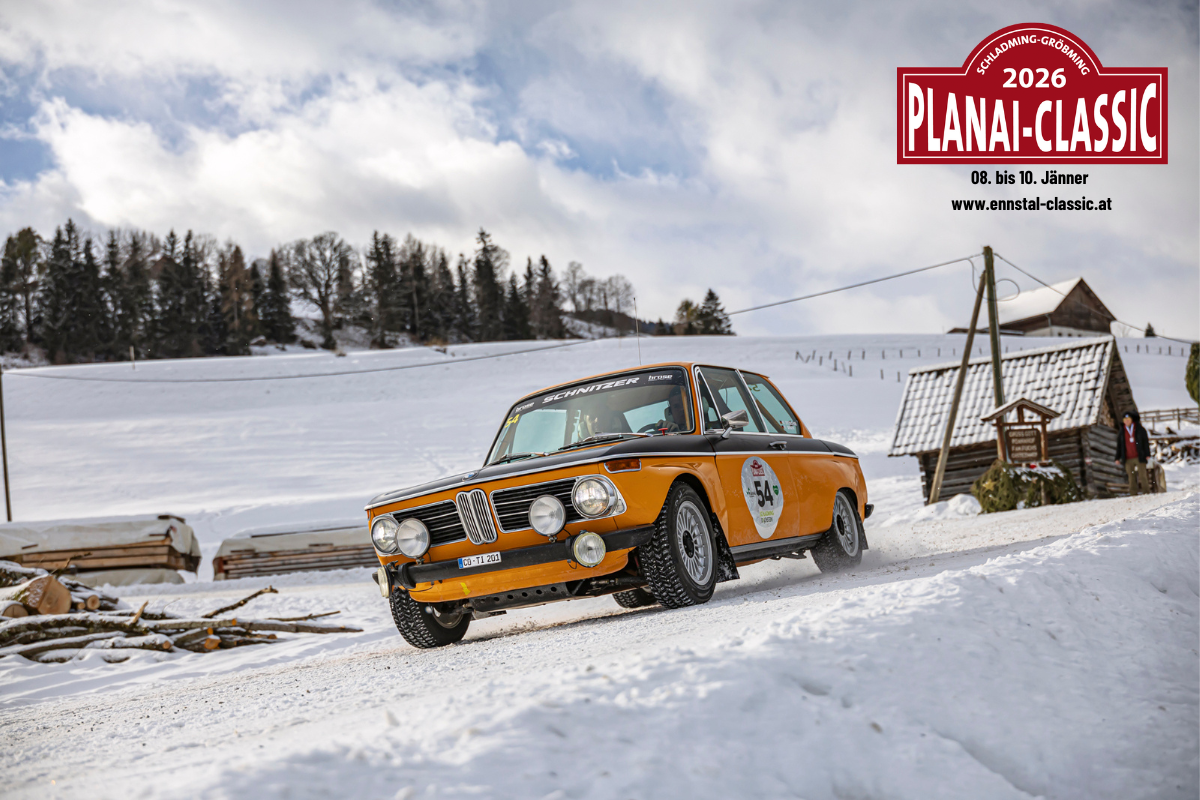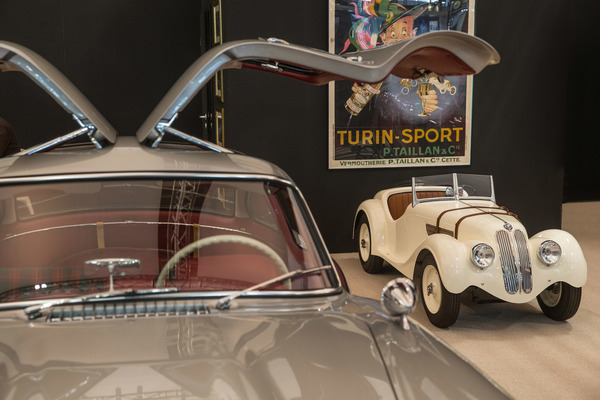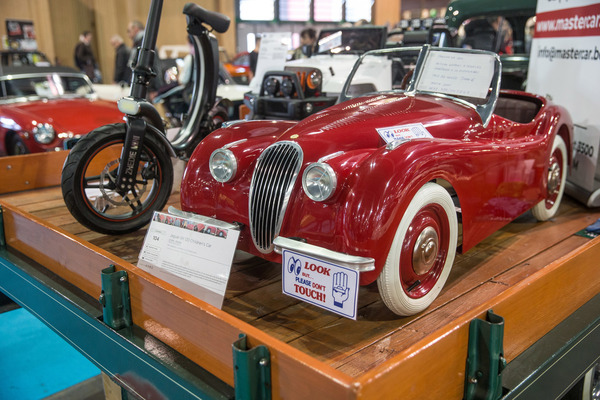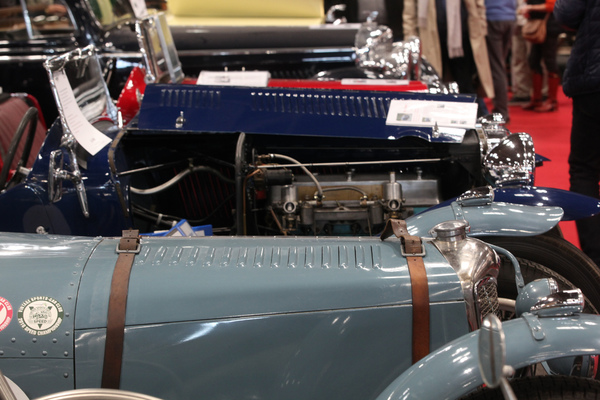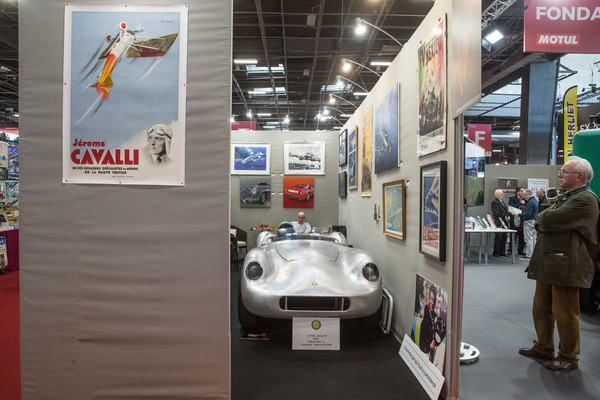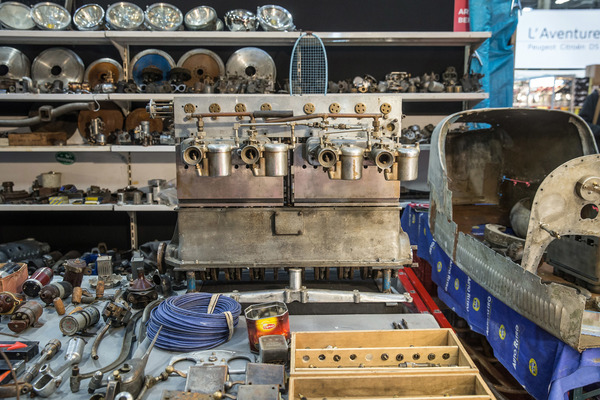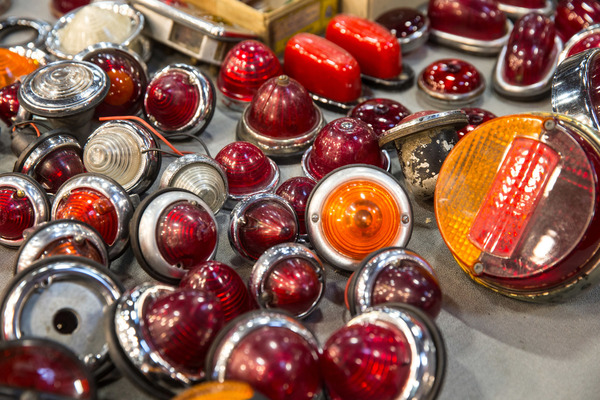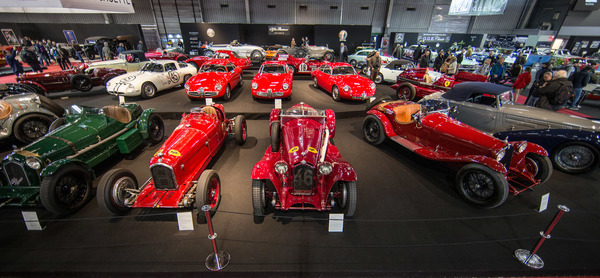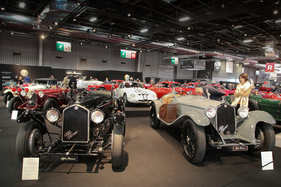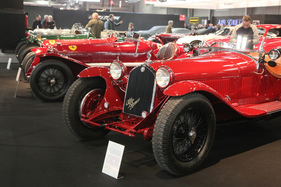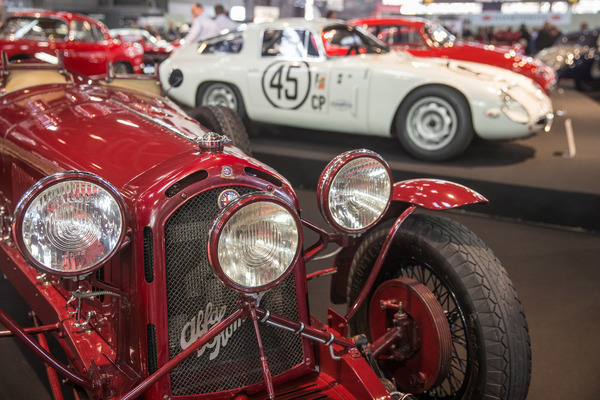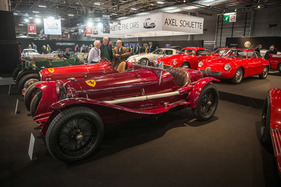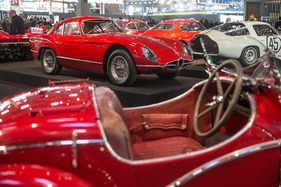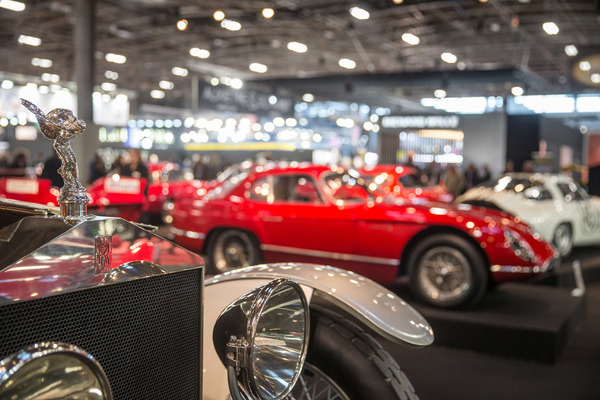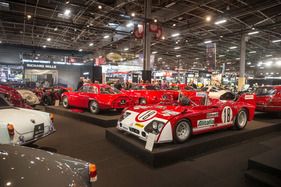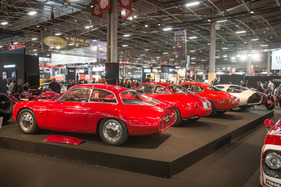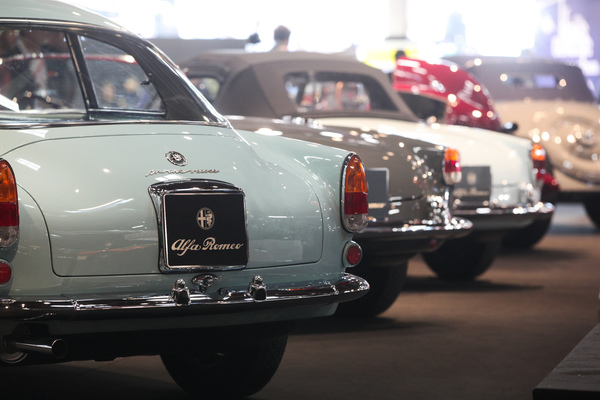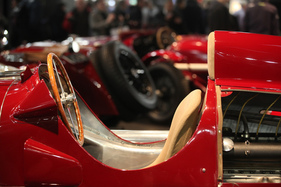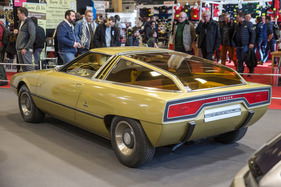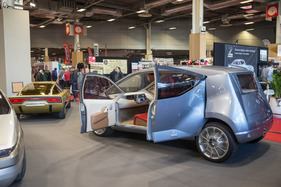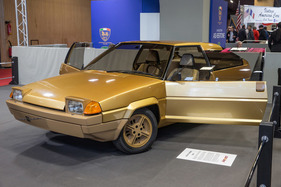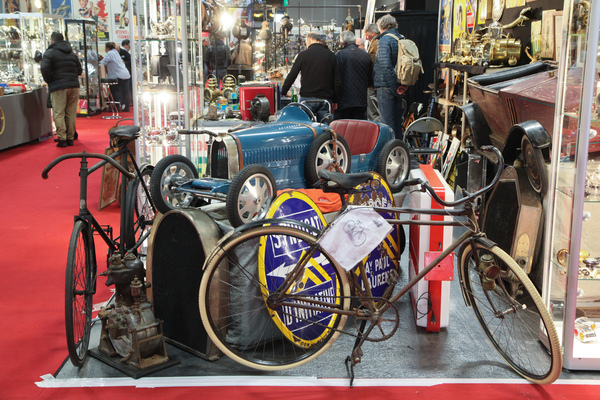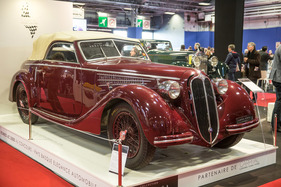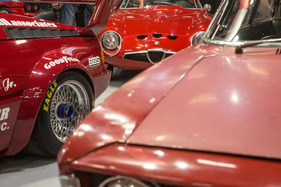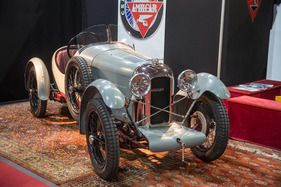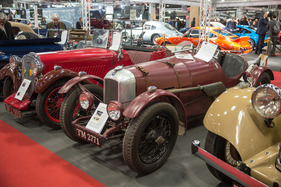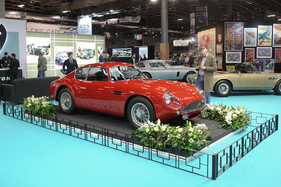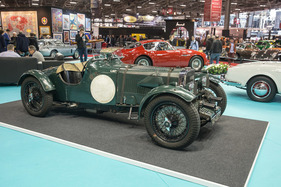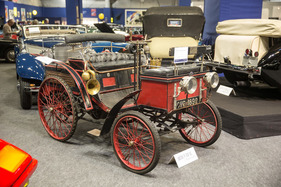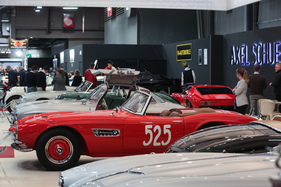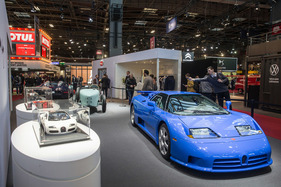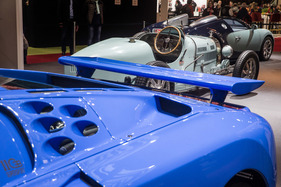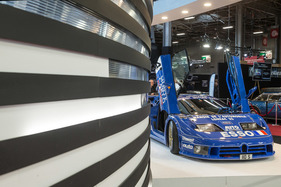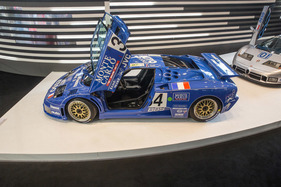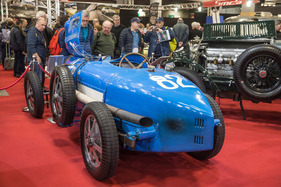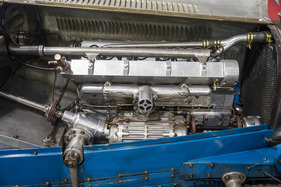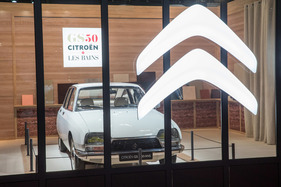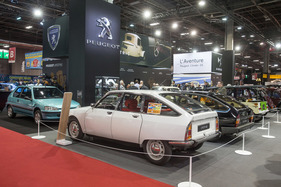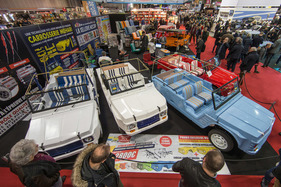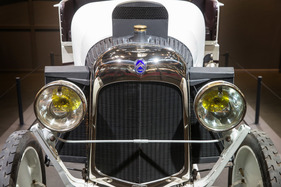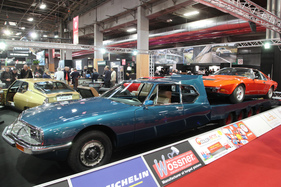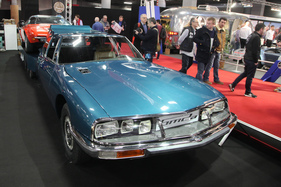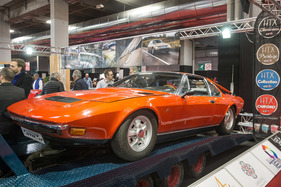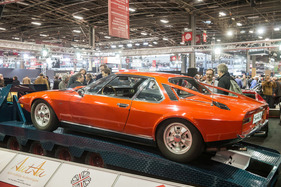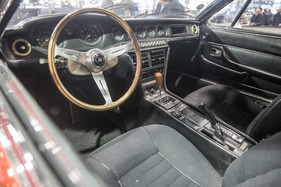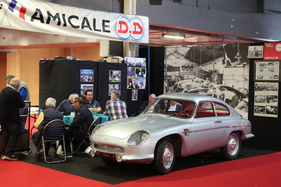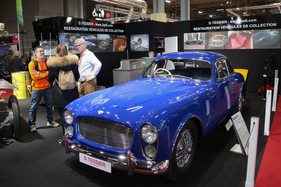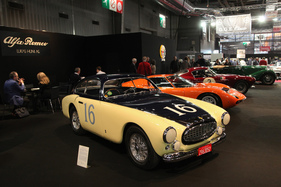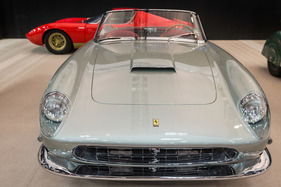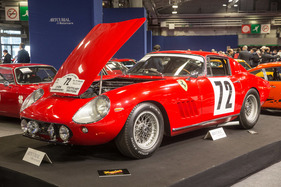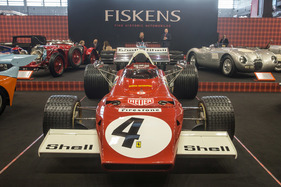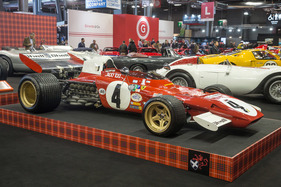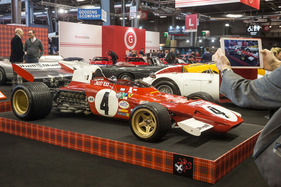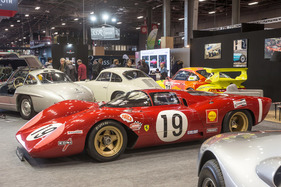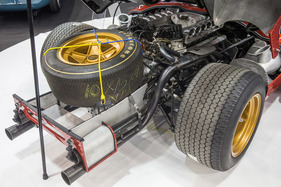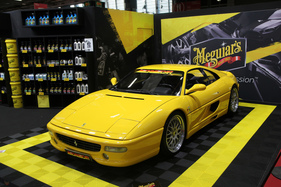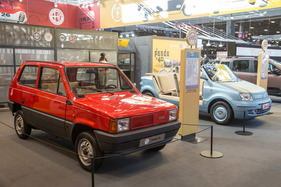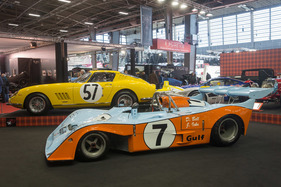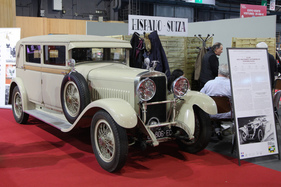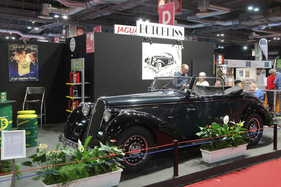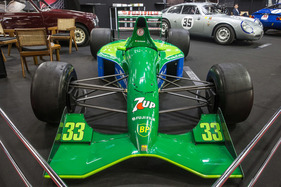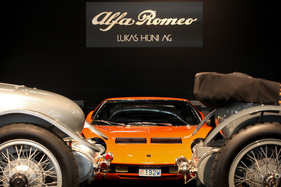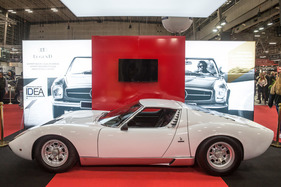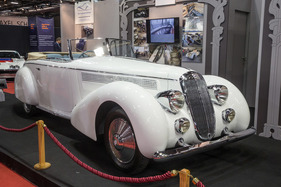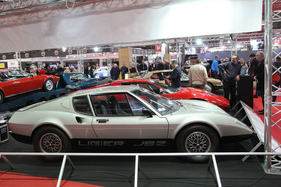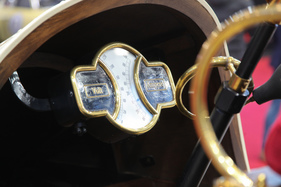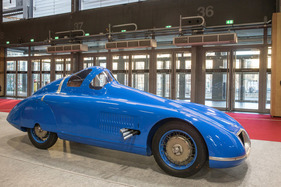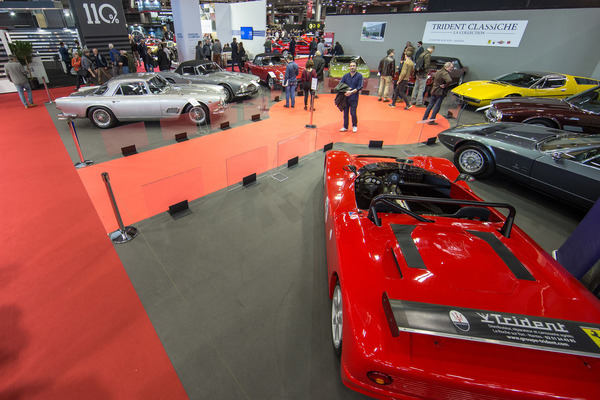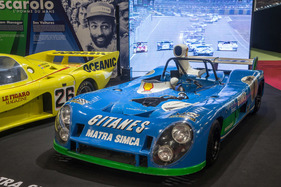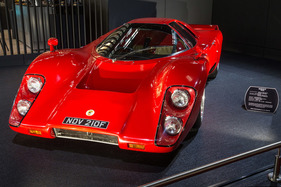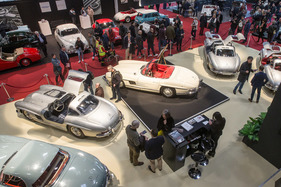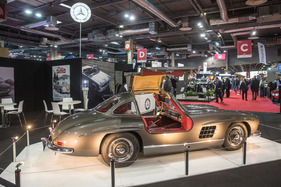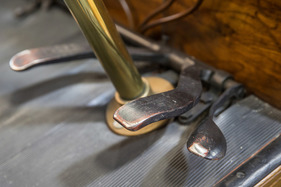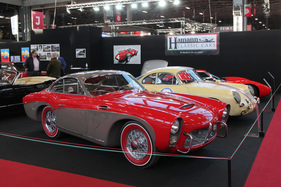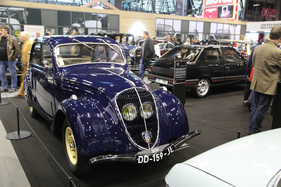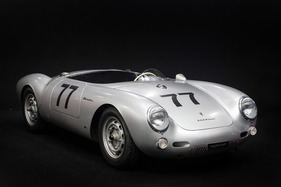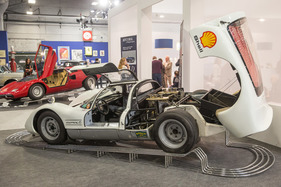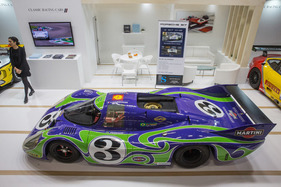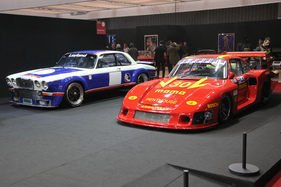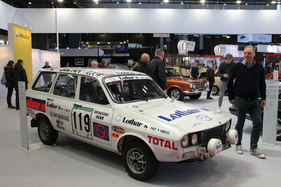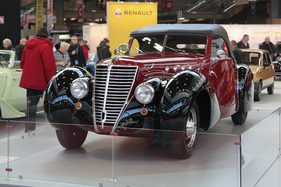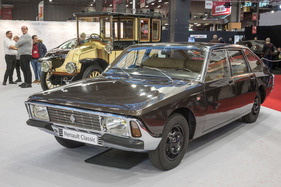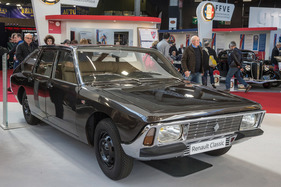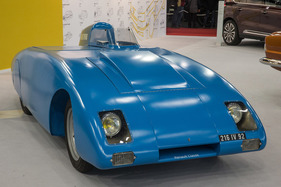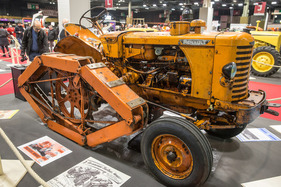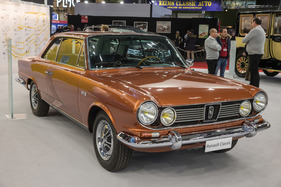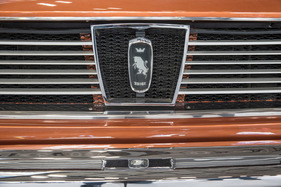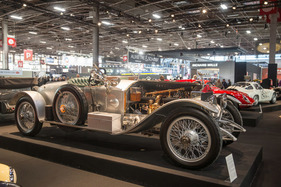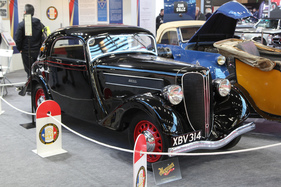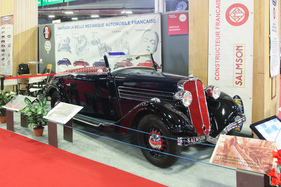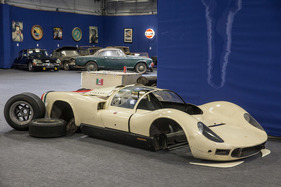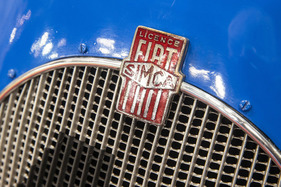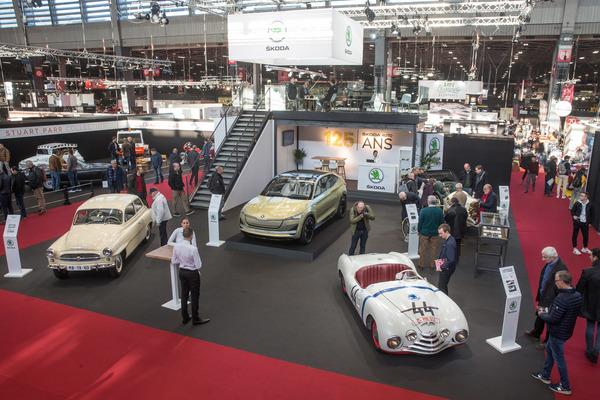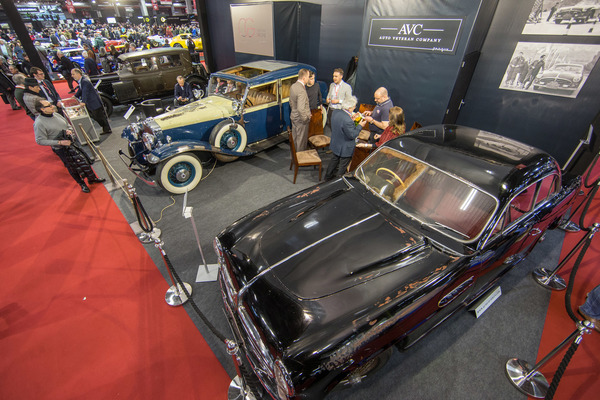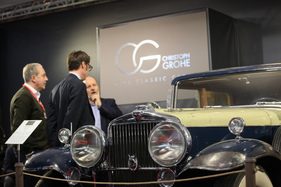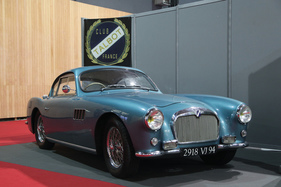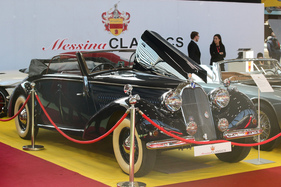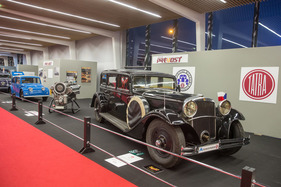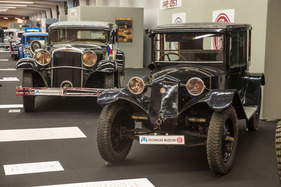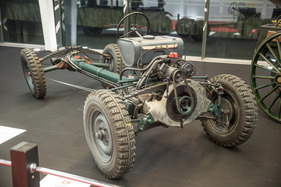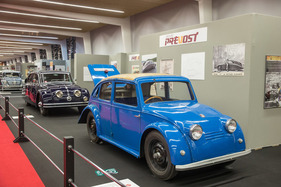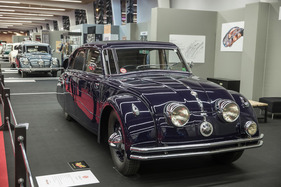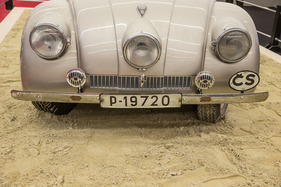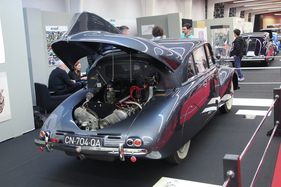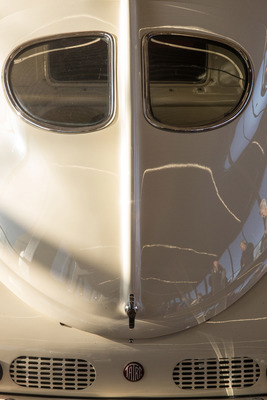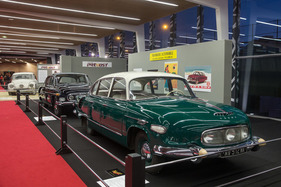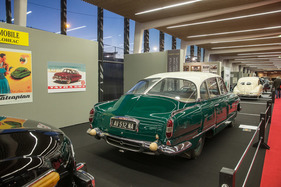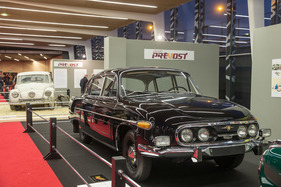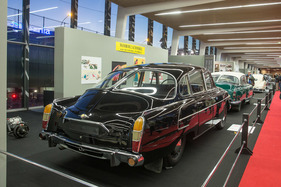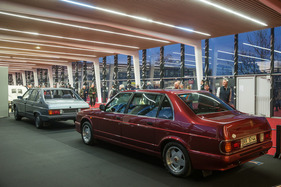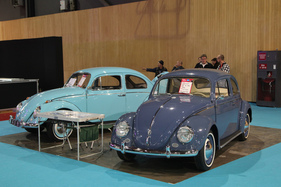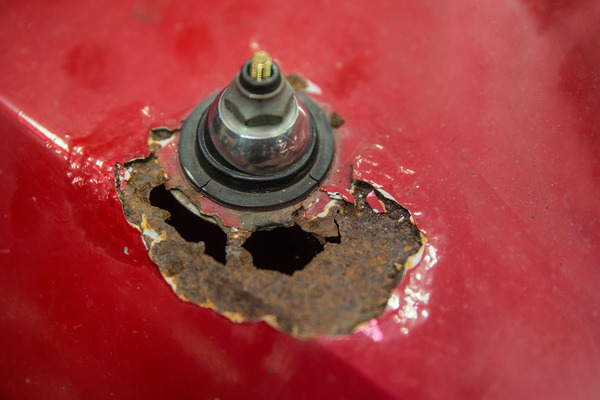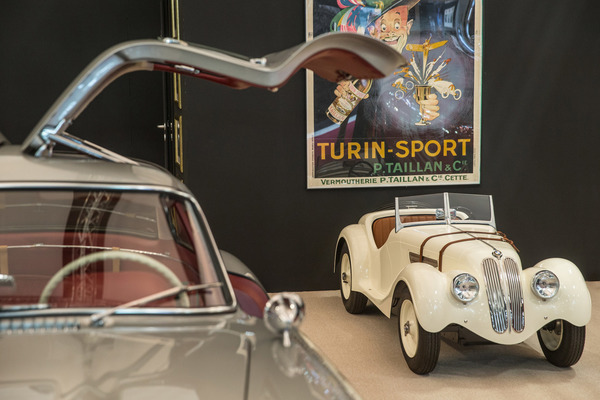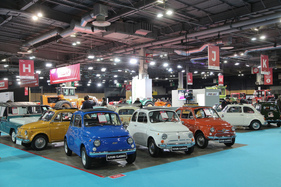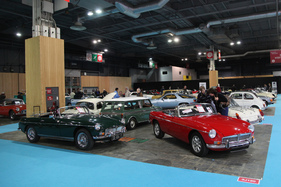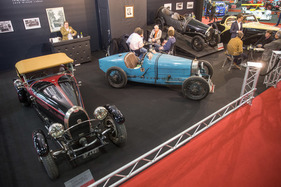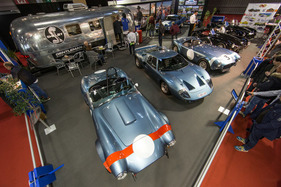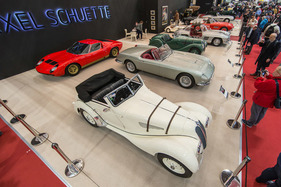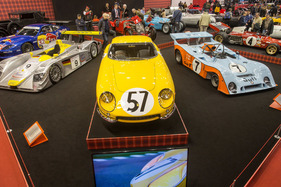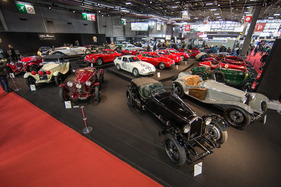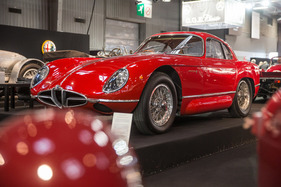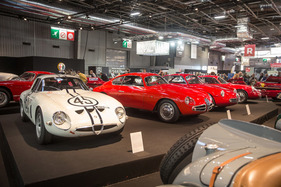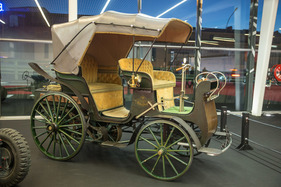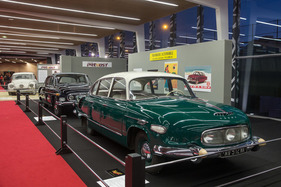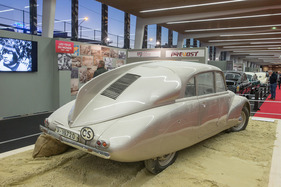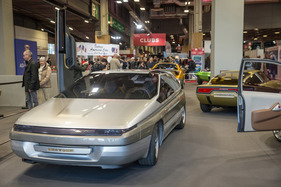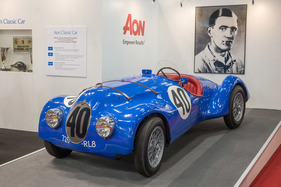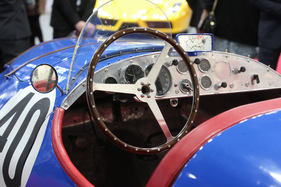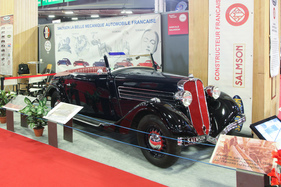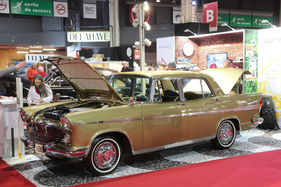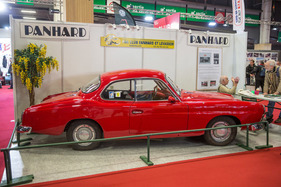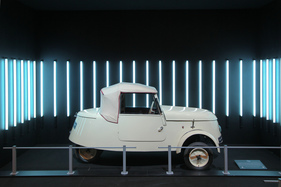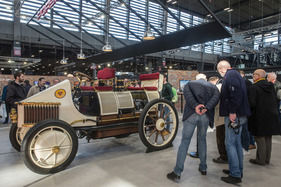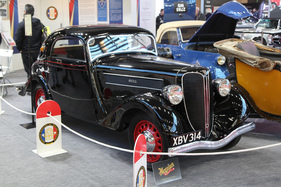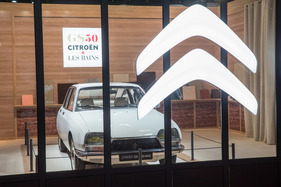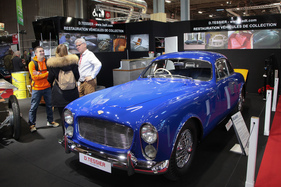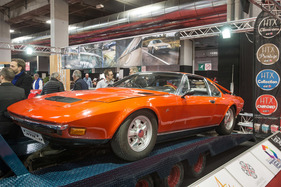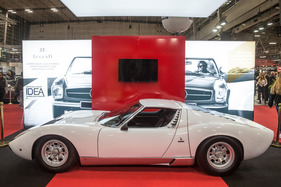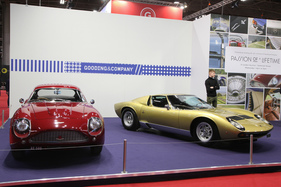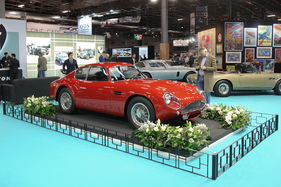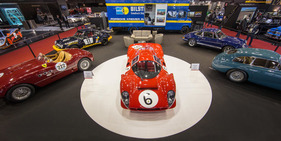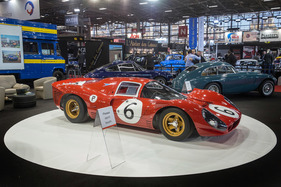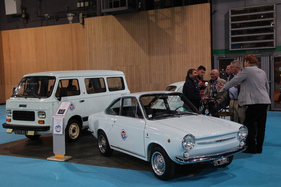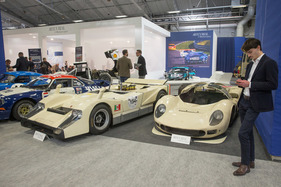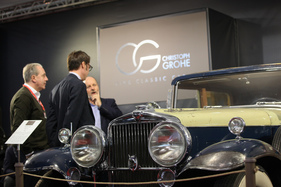It's certainly not for everyone, the Rétromobile classic car show in Paris, but those who like it travel to the French capital every year to see the most beautiful, rarest and most expensive historic cars in the world. And every year, the fair manages to amaze and impress its visitors.
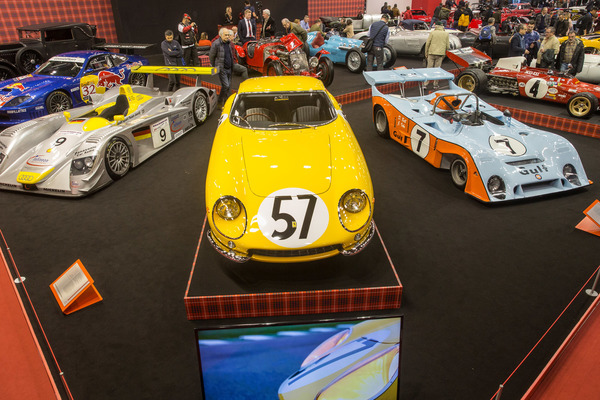
And it's not even the size that makes the difference. With 72,000 square meters, 620 exhibitors and around 1000 vehicles in the exhibition halls, the Rétromobile is actually one of the smaller trade fairs; Techno Classica or Retro Classics Stuttgart, but also Auto e Moto d'Epoca in Padua are larger. In terms of quality per square meter, however, hardly anyone can hold a candle to the event in Paris, and the 120 club stands also speak for themselves.
110 years of Alfa Romeo
As is well known, Alfa Romeo is celebrating its 110th birthday in June 2020. It was therefore fitting that exclusive Swiss dealer Lukas Hüni dedicated his stand to the Milanese brand from February 5 to 9, 2020. As in previous years with other brands, particularly impressive and rare vehicles were brought together. As a long-standing and successful car manufacturer, Alfa Romeo naturally offered a wide selection, but Hüni concentrated on just a few models.
One focus was on the pre-war 8C 2300, another on the sporty Giulietta of the post-war period, some Zagato versions of which could also be admired on the stand.
These were joined by one of only two Alfa Romeo 2000 Sportiva Coupés ever built and an Alfa Romeo 33 TT 3, which was the last car to officially compete for the brand at Le Mans.

A total of 20 rare Alfa Romeos were on display, each of which would almost have been worth a visit to the show.
Extensively documented background information on the individual vehicles made viewing the Hüni stand almost a half-day task. Oh là là!
Over 100 years of Tatra
The Tatra brand no longer builds passenger cars today, but it did for over 100 years. A special show with around a dozen vehicles told this story, illustrating the entire development history of this unusual car manufacturer, from the 1897 President with a Benz engine to the 210 km/h Tatra 700 with a V8 aluminum engine, built from 1996 to 1998.
In between, there were famous models such as the Tatra 87, built from 1937 to 1950, which was a whopping 160 km/h fast with just 75 hp, even before the Second World War. For smaller budgets, the Tatraplan T600 was built between 1947 and 1951 with a four-cylinder engine, 6342 of them. There was also a diesel prototype and a two-door version as a one-off.
From the 1950s to the 1970s, the Tatra 603 provided luxurious travel, always with a 2.5-liter V8, but with a newly designed body in 1968.
Emphasis was always placed on good aerodynamics and the rear-engine design was generally retained, although there were exceptions.
Miroslav Zikmund and Jiri Hanzelka even drove a Tatra T87 once around the world, covering 160,000 km and passing through 44 nations. It goes without saying that the car had to endure a lot and was put through its paces.
Bertone's forgotten treasures
Some time ago, the remaining items in the Bertone collection were auctioned off and found a new home at the ASI. From this collection, lesser-known Bertone creations from the late 1960s onwards were on display in Paris, including the Autobianchi Runabout, the Ferrari Rainbow and the Citroën Camargue.
Only rarely on public display are one-offs such as the Lamborghini Genesis from 1988, a monospace design similar to a Renault Espace, but with a V12 5.2-liter engine, or the Suzuki Go from 1972, a leisure car that was presented in Brussels in 1972.
The Citroën Zabrus, which Bertone built in 1986 on the basis of the Group B BX 4TC, is also hardly ever exhibited.
A very special Gordini
Anyone who strolled attentively between the various stands could always spot cars that they had probably never seen before. One of these cars was the Simca/Fiat Gordini from 1938 with chassis number 803068. Christian Huet tracked down this lost car after a long search and subsequently restored it completely. This racing sports car by Amédée Gordini has a very special history, as it took part in the 24 Hours of Le Mans three times and also had a very rich motorsport life. It was in active use until 1949, the year in which it once again took part in the 24 Hours of Le Mans. After 13 hours, the engine gave up the ghost.
When Huet was able to buy the car in 2009, it was still in its original color, but time had taken its toll. Huet painstakingly rebuilt the car himself (only the saddlery work was outsourced), salvaged what could be salvaged and made up what was missing.
The result is impressive, the only thing one would have liked to see on the former racing car is a little Le Mans patina.
The rarities on the club stands
Those who wanted to see rare cars were also in the right place at the club stands. Every year, the clubs make an effort to bring new and never-before-seen vehicles to Paris.
At the Salmson stand, for example, visitors could admire a freshly restored convertible that not so long ago had trees growing through it.
On the Simca stand, a vehicle from the Brazil offshoot called Emisul 6M Rallye from 1966 was on display, of which only 597 were built in South America.
And on the Panhard stand there was one of 106 Arista Passy with Panhard technology built in 1958 and 1959.
Electricity as a side topic
Electric cars were not completely absent in Paris either. Porsche and Peugeot wanted to make it clear that electric drive technology already has a long tradition.
The PSA Group exhibited a Peugeot VLV électrique from 1941, which already had a range of 75 to 80 km thanks to its low weight of 350 kg (the battery alone weighed 160 kg). Only 377 units of the little car, which had a maximum speed of 36 km/h, were built.
The Peugeot 106 E was produced in somewhat larger numbers from 1995 onwards. It was built in 3542 units and offered a range of 90 km.
In comparison, the Lohner-Porsche was produced in almost homeopathic doses, but around the turn of the century, i.e. around 1900.
The Rosengart, which was also available with an electric drive, should not be forgotten in this list.
Anyone interested in electrified classic cars could find help at the Rétromobile, particularly in the area of the Citroën 2CV and Méhari.
Car manufacturers in slow gear
Overall, the car manufacturers were cautious. Mercedes-Benz and BMW were no more officially present than the Volkswagen Group (except Bugatti, Skoda and Lamborghini) or Japanese manufacturers. But they could have celebrated the Audi quattro or 100 years of Mazda.

The local manufacturers, i.e. the PSA Group and Renault, stepped into the breach. FCA, Skoda and Bugatti also showcased beautiful vehicles, while Lamborghini's Polo Storico highlighted its restoration experience.
PSA celebrated the 50th anniversary of the Citroën SM and Citroën GS, while Renault brought some rare vehicles and one-offs to Paris.
French specialties
Of course, some French specialties were to be expected in Paris, and they were there to be seen. For example, the Delahaye Club had a 1953 135 MS model with a coupé body by Faget Varnet, which was probably the last Delahaye with a special body.
In terms of design, the car already anticipated the later Facel Vega and was reminiscent of the Ford Comète.
For many visitors to the Rétromobile, it was the first time they had seen Pietro Frua's Citroën SM. In principle, it was a counter-design to the factory SM that was eventually produced, and it was certainly convincing. Its design was reminiscent of the Porsche 914/6 Hispano.
The car was shown at the Geneva Motor Show in 1972 and later even made an appearance as the Fiat 130. In Paris, however, you had to look hard to find it, as it was positioned on a rather overloaded stand and on the loading bridge of a Citroën SM tow truck.

The many Bugatti and Talbot-Lago were easier to find, and Delahaye was also to be discovered again and again, but only a Ligier JS2.
Exclusive and less exclusive offers
As always, the international dealers spared no effort to bring exclusive vehicles to Paris.
This went so far that around a dozen Lamborghini Miura were spread out in Hall 1, making the mid-engine sports car, which was only produced a few hundred times, almost less exclusive than the only Fiat Panda 30 on display at the FCA Group stand.

Nonetheless, the range on offer from the dealers was overwhelming; it is rare to see so many exclusive cars so close together. However, the cars at the Rétromobile are also getting younger and younger, as a glance at the Girardo & Co stand clearly showed.
Gooding & Co exhibited for the first time in Paris, but with a Bugatti 59, a Lamborghini Miura P400 SV and an Aston Martin DB4 GT Zagato, they had brought three real raisins (from the upcoming London auction).
The fact that Kidston then also showed another Aston Martin DB4 GT Zagato and, of all things, in red, was perhaps simply bad luck.
One of the three Ferrari 330 P4
But let's stick with red and point to the car that many cited as the absolute highlight of the Rétromobile. We are talking about the Ferrari 330 P4 from 1967, one of the most beautiful sports prototypes of all time.
Chassis 0858 was clearly visible with plenty of space around it near the center of Hall 1, and it deserved its place. After all, this car won the 1000 km of Monza in 1967 with Lorenzo Bandini and Chris Amon at the wheel, and was also victorious at Daytona. At the 24 Hours of Le Mans, the car finished third overall, and at the 500 Miles BOAC at Brands Hatch, Jackie Stewart and Chris Amon drove the prototype to second place overall. Stewart was obviously very impressed by the 330 P4: "The Ferrari 330 Pç, the best car I ever drove".
No wonder crowds of people constantly formed around the rare racing car, of which only three were ever built.
Growing private market
The private sales at the back of the fair were larger than in previous years.

There were also some very interesting and rare vehicles for sale, for example a Moretti 500 or a two-stroke Saab 96.
The prices were quite realistic, so that one or two cars were marked "vendu" after the first two days.
Three auctions
For those who did not find what they were looking for at the dealers and private dealerships, there were a further 400 vehicles to choose from at the three auctions held by RM/Sotheby's ( at Place Vauban), Bonhams ( at the Grand Palais) and Artcurial(at the trade fair).
This opportunity was also used extensively, as the three auction houses reported an average sales rate of over 60 percent.
Positive mood
In general, the mood in the halls was optimistic, with dealers sensing keen interest from classic car enthusiasts. The auction results also showed healthy demand. For Max Girardo it is clear: "The sales process has become more complex compared to the past, but a good car at the right price will always find a buyer".
David Gooding, who will be holding a new auction in Europe with his auction house in April 2020 and is convinced that rare and good cars will always attract interest, agreed. In any case, further auctions are not ruled out.
Christoph Grohe added that he could clearly feel that the mood had improved again and proudly pointed out that he had already sold a car at the Rétromobile.
Who-is-sho
Those making the pilgrimage through the halls kept bumping into familiar faces.
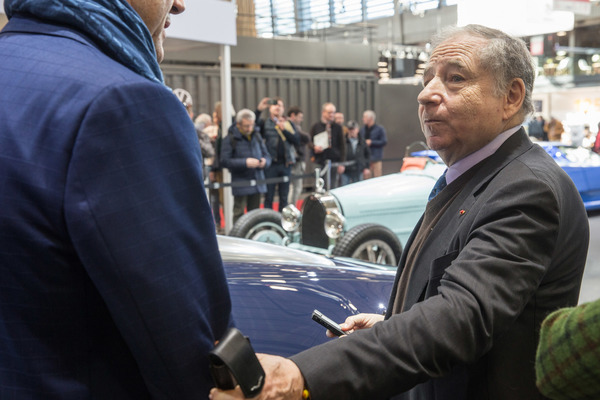
Jean Todt, for example, could be seen at the Bugatti stand, while Valentino Balboni looked under the hood of a Lamborghini Miura.

More pleasant than in other years
In general, the 45th Rétromobile was more pleasant from a visitor's point of view than previous events. The catering stands were largely able to cope with the rush, and there were also new catering options.
In addition, there was more order in the halls, the club stands were for the most part close together, as were the art and accessory stands. This made it easier to find your way around than in previous years.
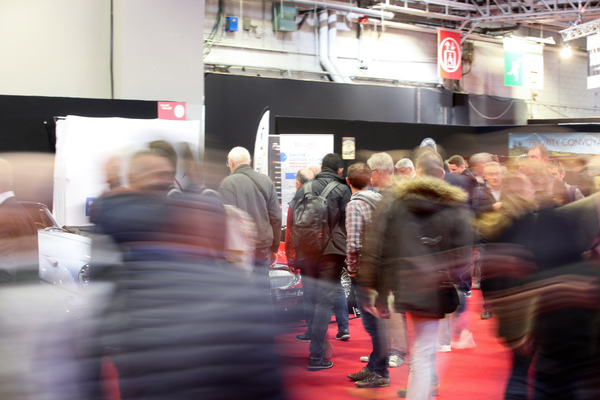
Of course, it was sometimes difficult to get through the bottlenecks when visitor numbers were high in 2020.
What else stood out
It was also noticeable that, unlike at previous trade fairs, only a few motorcycles were on display. Museums and their wares were also thin on the ground and the range of parts on offer was also clear. Visitors also missed a certain degree of price transparency, with hardly any prices being displayed for the more valuable cars.
And, of course, what was particularly lacking was a lively driving scene in front of the halls, as had been the case in previous years.
But these were only minor drawbacks compared to the many plus points that the Rétromobile had to offer.


